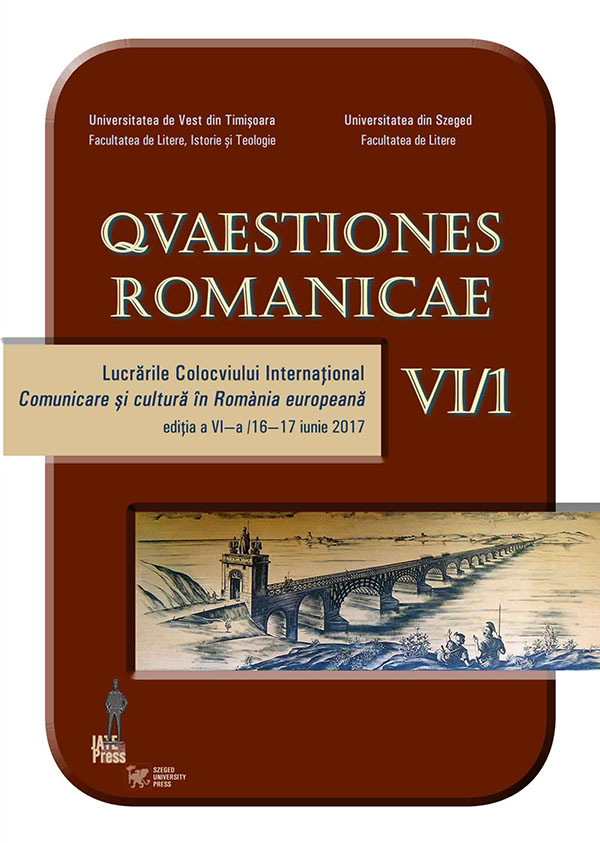Canonul împrumutului lexical – grecismele în latină
Abstract: (The Canon of Lexical Borrowing – Greek Words into Latin) The question we take as a starting point concerns the notion of “canon” in the process of lexical borrowing: does the grammatical norm impose the strict preservation of the phono-morphological features of the word from the source language or rather requires the adaptation of the borrowed word to the phonetic and morphological system of the target language? We shall analyze from this point of view the Greek words that were borrowed in classical Latin, taking into account, on the one hand, the diastratic variation and, on the other hand, the various attempts of the speakers to maintain a balance between the orthography and pronunciation in the source language and the phono-morphological specificity of Latin. Thus, we will trace back the phonetic and morphological variations that a Greek word may suffer in its process of integration into Latin, as reflected in the ancient authors and especially in the classical and late grammarians that offered various explanations of the words in question. In what form did these Greek words settle in spoken Latin? Or, better said, did they really settle in one form? Or did diatopic, diachronic and diastatic variants circulate? To answer these questions, we will use the testimony of the Romance languages: there are situations where, for a single Greek term, there must be reconstructed several variants, either synchronous - belonging to the various diatopic varieties of the spoken language – or diachronic ones.
Keywords: Lexical borrowing, Greek, Latin, phono-morphological integration, Romance Inheritance.
Rezumat: Întrebarea de la care pornim privește noțiunea de „canon” în procesul de împrumut lexical: norma pretinde conservarea cât mai strictă a formei cuvântului din limba sursă sau mai degrabă cere adaptarea termenului nou intrat în limbă la sistemul fonetic și morfologic al limbii țintă? Vom analiza din acest punct de vedere cuvintele grecești împrumutate în latina clasică, ținând cont, pe de o parte, de distincția diastratică (cult vs popular) și, pe de altă parte, de diversele încercări ale vorbitorilor de a păstra un echilibru între grafia și pronunția din limba sursă și specificul fono-morfologic al limbii latine. Astfel, vom urmări variațiile de ordin fonetic și morfologic pe care le poate suferi un termen de origine greacă în procesul de integrare în limba latină, așa cum se reflectă ele la autorii antici și, mai ales, la grămăticii din perioada clasică și târzie care propun diverse explicații ale cuvintelor în cauză. În ce formă s-au stabilizat aceste grecisme în latina vorbită? Sau, mai bine zis, s-au stabilizat cu adevărat? S-au încetățenit cu o singură formă, sau au circulat variante diatopice, diacronice și diastratice? Pentru a răspunde la aceste întrebări, vom recurge la mărturia limbilor romanice: există situații în care pentru un singur termen grecesc trebuie reconstruite mai multe variante, fie sincronice – aparținând diverselor varietăți diatopice ale limbii vorbite –, fie diacronice – pentru care se pot stabili perioadele de funcționare în special cu ajutorul cronologiei relative.
Cuvinte-cheie: împrumut lexical, greacă, latină, adaptare fono-morfologică, moștenire romanică.
